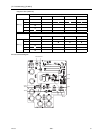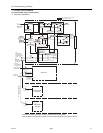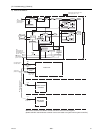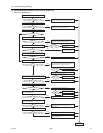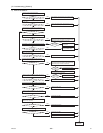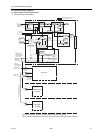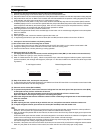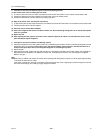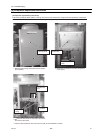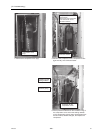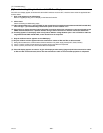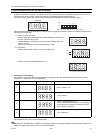
[ IX Troubleshooting ]
- 266 -
HWE08040 GB
3. Leak spot: In the case of extension pipe for indoor unit (Heating season)
(1) Run all the indoor units in heating test run mode.
1) To run the indoor unit in test run mode, turn SW3-2 from ON to OFF when SW3-1 on the outdoor control board is ON.
2) Change the setting of the remote controller for all the indoor units to the heating mode.
3) Check that all the indoor units are performing a heating operation.
(2) Stop all the indoor units, and stop the compressor.
1) To stop all the indoor units and the compressors, turn SW3-2 from ON to OFF when SW3-1 on the outdoor control board is ON.
2) Check that all the indoor units are stopped.
(3) Close the service valves (BV1 and BV2).
(4) Collect the refrigerant that remains inside the indoor unit. Do not discharge refrigerant into air into the atmosphere
when it is collected.
(5) Repair the leak.
(6) After repairing the leak, perform evacuation of the extension pipe for the indoor unit, and open the service valves
(BV1 and BV2) to adjust refrigerant.
4. Leak spot: In the case of outdoor unit (Heating season)
1) Collect the refrigerant in the entire system (outdoor unit, extended pipe and indoor unit).Do not discharge refrigerant into the
atmosphere when it is collected.In the cooling cycle, the section between check valve CV1 and LEV 2a/b will form a
closed circuit.Open LEV1 before recovering the refrigerant or evacuating the system.
2) Repair the leak.
3) After repairing the leak, replace the dryer with the new one, and perform evacuation of the entire system, and calculate the
standard amount of refrigerant to be added (for outdoor unit, extended pipe and indoor unit), and charge the refrigerant.
Refer to "VIII [4] 3. "
If the indoor or outdoor units need to be turned off for repairing leaks during Step 1) above, turn off the power approximately
1 hour after the units came to a stop.
If the power is turned off in less than 15 minutes, LEV2a and LEV2b may close, trapping high-pressure refrigerant in the out-
door unit heat exchanger and creating a highly dangerous situation.



